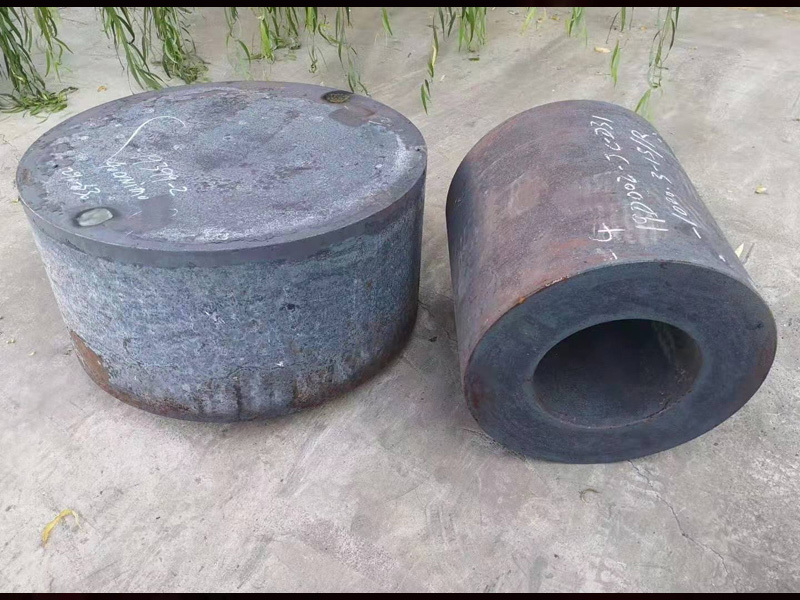Composition of forging cost
Release time:
2024-03-29
The composition of forging costs can be divided according to the economic use of production costs, and the cost items divided by economic use are called cost items. According to the regulations of the financial department, it is generally divided into six items: raw materials, fuel and power, wages and surcharges, waste losses, workshop expenses and enterprise philosophy fees. For forging production, the division and content of cost items are roughly as follows.

The composition of forging costs can be divided according to the economic use of production costs, and the cost items divided by economic use are called cost items. According to the regulations of the financial department, it is generally divided into six items: raw materials, fuel and power, wages and surcharges, waste losses, workshop expenses and enterprise philosophy fees. For forging production, the division and content of cost items are roughly as follows.
1. Raw material refers to the steel consumed to form the forging entity (deducting the value of recyclable waste, such as burrs, skins, heads, etc.).
2. Fuel and power refers to purchased and homemade fuel and power (electricity, steam, compressed air, etc.) directly used in the production of forgings.
3. Mold refers to a variety of molds directly used for the production of forgings.
4. Wages and surcharges for production workers refer to the wages of workers directly involved in the production of forgings and the wage surcharges drawn in accordance with the prescribed proportion.
5. Waste loss refers to the loss of waste in the production process.
6. Workshop expenses refer to the costs incurred to manage and organize the production of the workshop. Workshop expenses include wages and wage surcharges for personnel other than production workers, office expenses, living utilities, auxiliary materials, depreciation of fixed assets (strip and plant), repair costs, amortization of low-value consumables, labor protection costs, transportation costs, external processing costs, profit and loss and damage of work-in-progress and other expenses.
7. Enterprise management fees refer to the costs incurred in managing and organizing the production of the whole plant. For the forging workshop of the integrated plant, the cost is prorated. Enterprise management fees include: wages and wage surcharges of enterprise management departments, office expenses, utilities, travel expenses, depreciation, repair expenses, amortization of low-value consumables, labor protection fees, design, research, testing and inspection fees, warehouse funds, security and fire-fighting equipment fees, staff education and training funds, interest expenses, trade union funds, incentive expenses, profit and loss and damage of materials, semi-finished products and finished products, sales expenses and others.
Grouping by the purpose of the expense (I. e., by cost item) clearly reflects the composition of the cost of the product, observes the proportion of the cost of different economic uses in the cost, and analyzes the specific reasons for the rise and fall of the cost. Therefore, this classification method is mainly used in enterprise cost management.
The method of collecting production costs according to the type of forging and calculating the cost of a single forging is called the single-piece cost method. In order to measure the cost level of the whole plant or the whole workshop, the single-piece cost of all forgings produced in the current period can be added up and divided by the total mass of forgings produced in the current period to obtain the cost of forgings tons.
The single-piece cost method is characterized by the cost calculation object for each forging, so it is easy to calculate the price of each forging. The "Collaborative Pricing Method for Steel Die Forgings" issued by the former Ministry of Machinery Industry is based on pieces, and it is also the common forgings pricing method on. Technical and economic analysis is also mainly used to calculate the forging cost of each process scheme.
The cost per ton can only reflect the cost level of the whole plant or the whole workshop, not the exact cost of each forging. Because the ton cost calculation method does not distinguish the complexity and mass size of forgings, the cost is calculated by tonnage. However, forgings of different complexity and quality require different forging equipment, fuel power unit consumption, mold consumption, etc., the unit (ton) cost is also different, and therefore can not reflect the accurate cost of each forging. Since the late 1970 s, some professional forging factories have implemented the single-piece cost calculation method in order to overcome the above-mentioned shortcomings of the ton cost calculation method, but there are many factors affecting the cost of forgings, such as the type of forgings, the type of raw materials, the type of equipment used, the type of technology and the level of management, and the proportion of the cost of forgings is also very different. The data in Table 9-1 reflect the current range and average cost ratio of general die forgings in China, which can be used as a reference for technical and economic analysis. The cost of raw materials is the * * * * * item in the cost, accounting for about 50% ~ 70% of the cost. Secondly, the cost of mold and fuel and power is also considerable, which shows the characteristics of high material consumption, high energy consumption and high tooling cost of forging production. In addition, it is worth noting that the proportion of enterprise management fees in China is too large, and the fixed costs in the table include workshop funds and enterprise management fees, which vary widely, ranging from 10% to 20%. As a result of the low-wage system currently in place in the country, the wages of production workers account for only about 5 per cent of the cost structure. From the above cost project analysis, it can be seen that improving material utilization and improving enterprise management is one of the effective ways to reduce forging costs and increase corporate profits. At the same time, it is also necessary to vigorously reduce fuel consumption, reduce fuel power costs, improve mold life, reduce mold usage and mold costs, and also one of the ways to reduce forging costs.
More information








